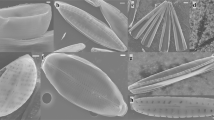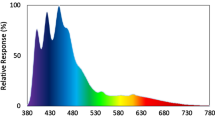Abstract
Three major organic matrix components, nacrein, MSI60 and N16 have been reported from the nacreous layer of Japanese pearl oyster, Pinctada fucata. Though several in vitro experiments have been carried out to elucidate the functions of these molecules details have not yet been clarified. In this report, we tempt to clarify the gene expression levels encoding the above three proteins between samples of 1) summer and winter seasons and 2) ocean and aquarium environments by using real-time polymerase chain reaction (PCR).
It was confirmed that the biomineralization process of P. fucata is mainly influenced by the circatidal rhythm of the ocean environment. The gene expressions coding for N16 and MSI60 increased at the time of high tide, while that of nacrein increased at the time of low tide. The similar tendency observed in N16 and MSI60 showed the possibility that both components are secreted simultaneously, supporting a hypothesis that N16 forms cross-linkage with MSI60 to form the membrane. The expressions of MSI60, N16 and glyceraldehyde-3-phosphate dehydrogenase (GAPDH) genes were remarkable in winter season, while no variation was found in the expression level of the nacrein gene in summer and winter season.
The study is the first attempt regarding the seasonal and circadian rhythms observed on gene expressions incorporated into molluscan shell formation. The results will give a new insight into the relationship between molluscan physiology and the mechanism of shell formation.
Similar content being viewed by others
References
Crenshaw M A. The soluble matrix from Mercenaria mercenaria shell. Biomineralization, 1972, 6: 6–11
Weiner S. Asparatic acid-rich proteins: major components of the soluble organic matrix mollusk shells. Calcified Tissue International, 1979, 29: 163–167
Cariolou M A, Morse D E. Purification and characterization of calcium-binding conchiolin shell peptides from the mollusk, Haliotis rufescens, as a function of development. Journal of Comparative Physiology B: Biochemical, Systems, and Environmental Physiology, 1988, 157: 717–729
Miyamoto H, Miyashita T, Okushima M, et al. A carbonic anhydrase from the nacreous layer in oyster pearls. Proceedings of the National Academy of Sciences of the United States of America, 1996, 93: 9657–9660
Sudo S, Fujikawa T, Nagakura T, et al. Structure of mollusc shell framework proteins. Nature, 1997, 387: 563–564
Samata T, Hayashi N, Kono M, et al. A new matrix protein family related to the nacreous layer formation of Pinctada fucata. FEBS Letters, 1999, 462: 225–229
Suzuki M, Murayama E, Inoue H, et al. Characterization of Prismalin-14, a novel matrix protein from the prismatic layer of the Japanese peal oyster (Pinctada fucata). Biochemical Journal, 2004, 382: 205–213
Tsukamoto D, Sarashina I, Endo K. Structure and expression of an unusual acidic matrix protein of pearl osyter shells. Biochemical and Biophysical Research Communications, 2004, 320(4): 1175–1180
Yano M, Nagai K, Morimoto K, et al. Shematrin: a family of glycine-rich structural proteins in the shell of the pearl oyster Pinctada fucata. Comparative Biochemistry and Physiology B: Biochemistry and Molecular Biology, 2006, 144(2): 254–262
Wada K. The influence of the life-activity upon pearl formation in the pearl culture of Pinctada martensii (Dunker) I. On the pearls produced under abnormal conditions of their health. Bulletin of the National Pearl Research Laboratory, 1959, 5: 381–394
Wada K. The influence of the life-activity upon pearl formation in the pearl culture of Pinctada martensii (Dunker) II. The seasonal changes of crystal growth and luster of the pearl. Bulletin of the National Pearl Research Laboratory, 1961, 6: 586–606
Wada K. Relations between growth of pearls and water temperature. Bulletin of the Japanese Society of Fisheries Oceanography, 1969, 299–301
Wada K. Nucleation and growth of aragonite crystals in the nacre of some bivalve mollusks. Biomineralization, 1972, 6: 141–150
Wada K. Growth of CaCO3 crystals in bivalve shell mineralization. Japanese Journal of Crystal Growth, 1985, 12: 57–70
Moura G, Almeida M J, Machado M J C, et al. Annual variation of some inorganic elements present in the biological fluids of Anodonta cygnea (L.) and possible effects on its calcification cycle. Biomineralization (BIOM2001), 2003a, 123–128
Moura G, Almeida M J, Machado M J, et al. The action of environmental acidosis on the calcification process of Anodonta cygnea (L.). Biomineralization (BIOM2001), 2003b, 178–182
Takeuchi T, Endo K. Biphasic and dually coordinated expression of the genes encoding major shell matrix proteins in the pearl oyster Pinctada fucata. Marine Biotechnology, 2006, 8(1): 52–61
Saigusa M. Biological rhythms in the marine environment: a perspective. Aquabiology, 2002, 24: 473–474
Saigusa M. A wide variety of patterns in the tidal rhythm, and the timing systems of the circatidal rhythm. Aquabiology, 2002, 24: 475–483
Kayanne H, Suzuki A, Saito H. Diurnal changes in the partial pressure of carbon dioxide in coral reef water. Science, 1995, 269(5221): 214–216
Kayanne H. Coral reefs and carbon dioxide. Science, 1996, 271(5253): 1299–1300
Samata T. Recent advances in studies on nacreous layer biomineralization. Molecular and cellular aspects. Thalassas, 2004, 20(1): 27–46
Author information
Authors and Affiliations
Corresponding author
Rights and permissions
About this article
Cite this article
Miyazaki, Y., Usui, T., Kajikawa, A. et al. Daily oscillation of gene expression associated with nacreous layer formation. Front. Mater. Sci. China 2, 162–166 (2008). https://doi.org/10.1007/s11706-008-0027-3
Received:
Accepted:
Published:
Issue Date:
DOI: https://doi.org/10.1007/s11706-008-0027-3




